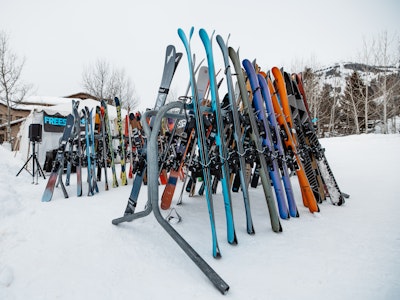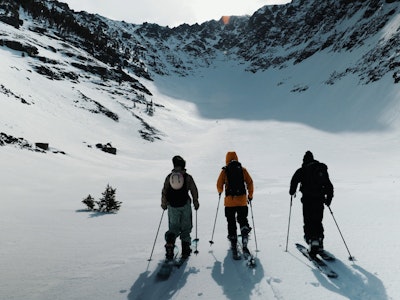INTERVIEW — Samuel Taggart
Born and raised in Hawaii, Ben Brough is a skater and a surfer at heart. A former team athlete for Volcom, Brough traveled the world competing in surf events as a teenager and, to his benefit, had the opportunity to visit museums and meet with artists as he worked to craft his own form. Seeing with his own eyes what many of us were stuck admiring in books in the classroom, Brough honed his vision—a cubist, abstract, Picasso-esque style blending different mediums. So, when an artist and friend of Völkl athlete, Paddy Graham, reached out to Brough about creating designs for the ski-maker’s latest Built Together collection, it was an easy fit. The “Spirit Animals” collection—featured across Völkl’s Revolt series—is certainly eye-catching, but we knew there was more to the story. From surfing to skiing, drawing inspiration from music and seeing his art “living” out in the world, here’s the scoop from Brough himself.
How did you get looped into the Built Together project for this season?
It was actually a buddy [of mine]—he’s an artist and friend of rider Paddy Graham. They were looking for an American artist, and it was as easy as that. The marketing guy reached out to me, we had a conversation and I started drawing. I’ve done a lot of work for surf and skate brands, but Völkl, by far, was the most fun to work with because [the process] was seamless and they gave me a lot of creative freedom. I sent the team at Völkl two different sets of ideas, just sketches: One is the “Spirit Animals” collection that you’re familiar with…
What was the other original idea, the one that didn’t make the cut?
It sort of touched on pirates a little bit. I’m familiar with skiing, but I don’t follow that world and the trends like I do with skating and surfing. I did some research on some of the riders and I was I was blown away—these guys are gnarlier than any snowboarder… ever. They’re hucking themselves twice as high and going twice as fast. So [that second idea] was kind of renegade-style like “Mad Max,” skull-and-crossbones kind of thing. But the “Spirit Animals” just clicked and it worked out really well.
How did you pick the animals to put on the skis?
I just picked animals that I felt were fast and agile, something that would resonate with the style of riding [the athletes] would do on the mountain.


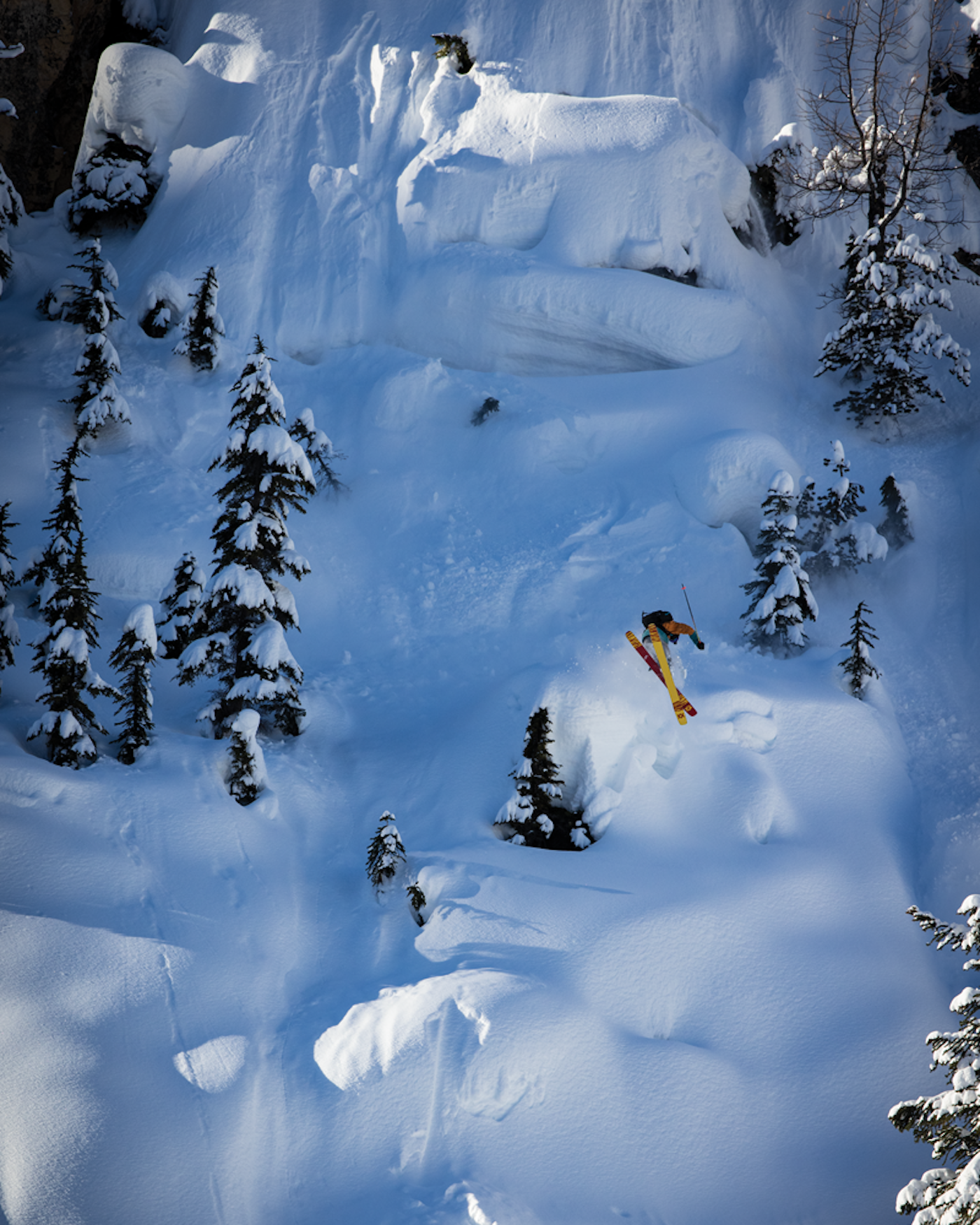
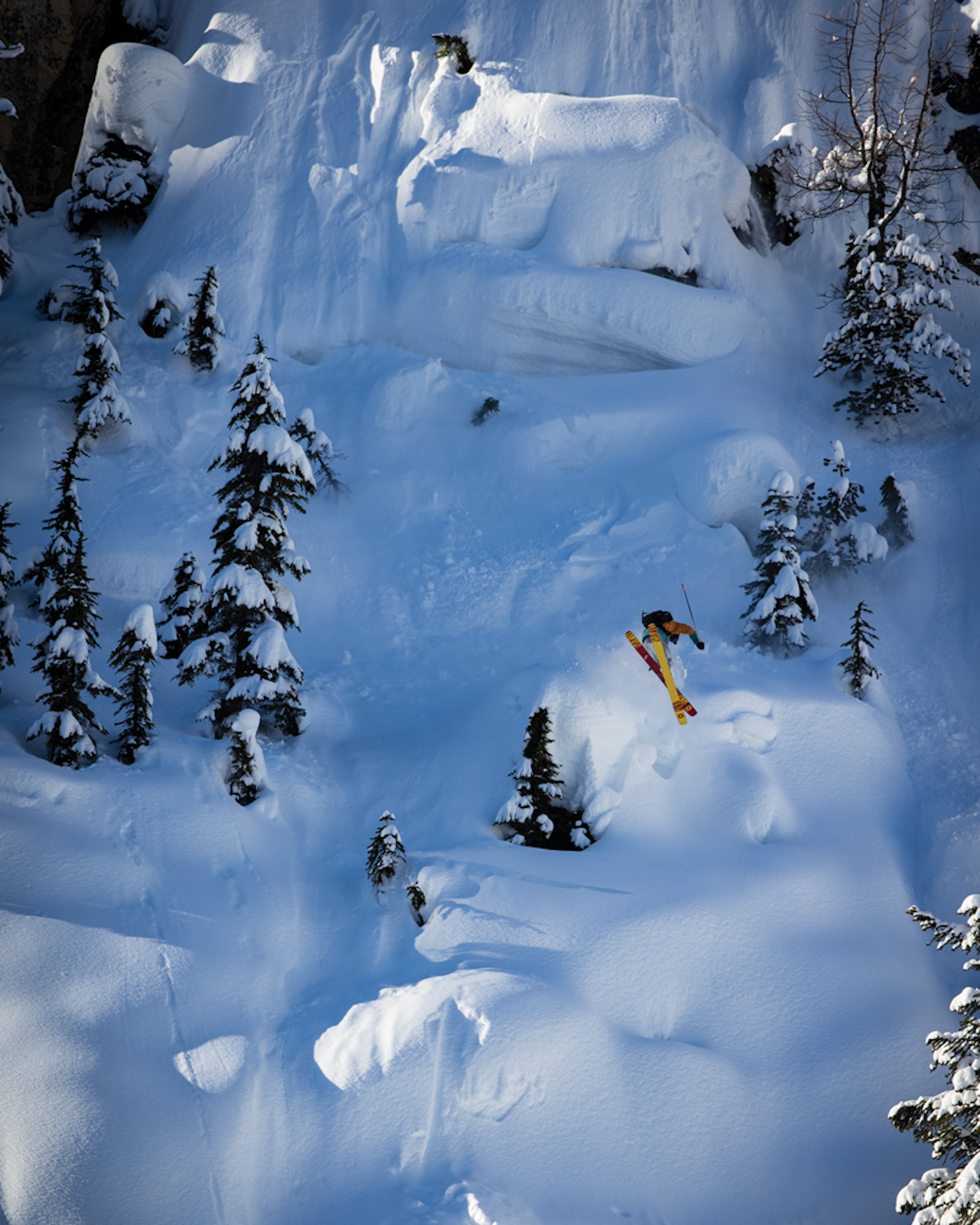
SKIER: Colter Hinchliffe
PHOTO: Eric Parker/TGR
What would you say is your spirit animal?
To tell you the truth I have a few. In Hawaii, we have spirit animals but we also have something called “aumakua,” which is a protector, something that shows up when you’re in danger. I’ve had a couple of them that have done that to me over the years: one is the sea turtle, another is an owl. But the theme of “Spirit Animals” fit really well because, coming from Hawaii, there’s a lot of talk about the spiritual realm, growing up with tales and folklore. This collection seemed to fit into that narrative.
Where do you draw your inspiration from when it comes to your artwork?
Music is number one; lyrics, feelings from songs, memories and things like that. Even just pictures in art history books—I like to look at where things came from and all the artists that worked before me, not only find my place in art history, but to see what they were doing at their time. I try to capture the space and time I’m living in, try to balance between abstract and figurativism. I like drawing comics and cartoons, things that are absolute, but I like to add a fun, abstract side.
What music you were listening to when you were creating this collection?
I can’t remember what I was listening to at the time… it’s [usually] rock and roll, old Outlaw country; that’s 90 percent of what I listen to. But, obviously, these weren’t really based off of music—I treated this more as a project, more like fine art. I’ve done snowboard and skateboard decks, but when it’s split in the middle, like a ski, I was like: “Okay, how am I going to tell that these are going to work?” The originals are just the animal heads on paper. I thought [splitting them] was going to be a really big challenge but it wasn’t as difficult as I thought. And I didn’t realize they would be so well-accepted.
What’s it like seeing your work out in the world, compared to looking at your art on the wall of a gallery?
Seeing the work in a gallery is cool. If someone has it in their home, that’s even better because they’re living with it. But it’s totally different when you see it in-use, especially when riders like Ahmet [Dadali], Paddy [Graham] and Tom [Ritsch] are flying down the mountain with your graphics on there. I mean, it’s my art on there and… I just hope that it helps them go a little faster, a little harder. When I set up a skateboard or surfboard, graphics play a huge part. If I’m looking down and there are shitty graphics, the board just doesn’t work as well.
How would you describe your artistic style, if you had to put it into words?
People always refer to Picasso, but it’s not like I’m looking at a Picasso painting saying: I want to paint it like this. I always wanted to be a cartoonist when I was a kid. I just want to draw cartoons, which is where my figurative stuff comes from. But the abstract side is the playful side of it where, even if I’m looking at like a plant, I’m not going to draw the plant exactly how I see it. I’m gonna have fun with it. Describing my style, I guess it’s kind of abstract-figurative or something that blends the two. But, it’s funny, I went to this three-day retreat that helps you talk about your art to the art world and it’s still a really hard thing to do.
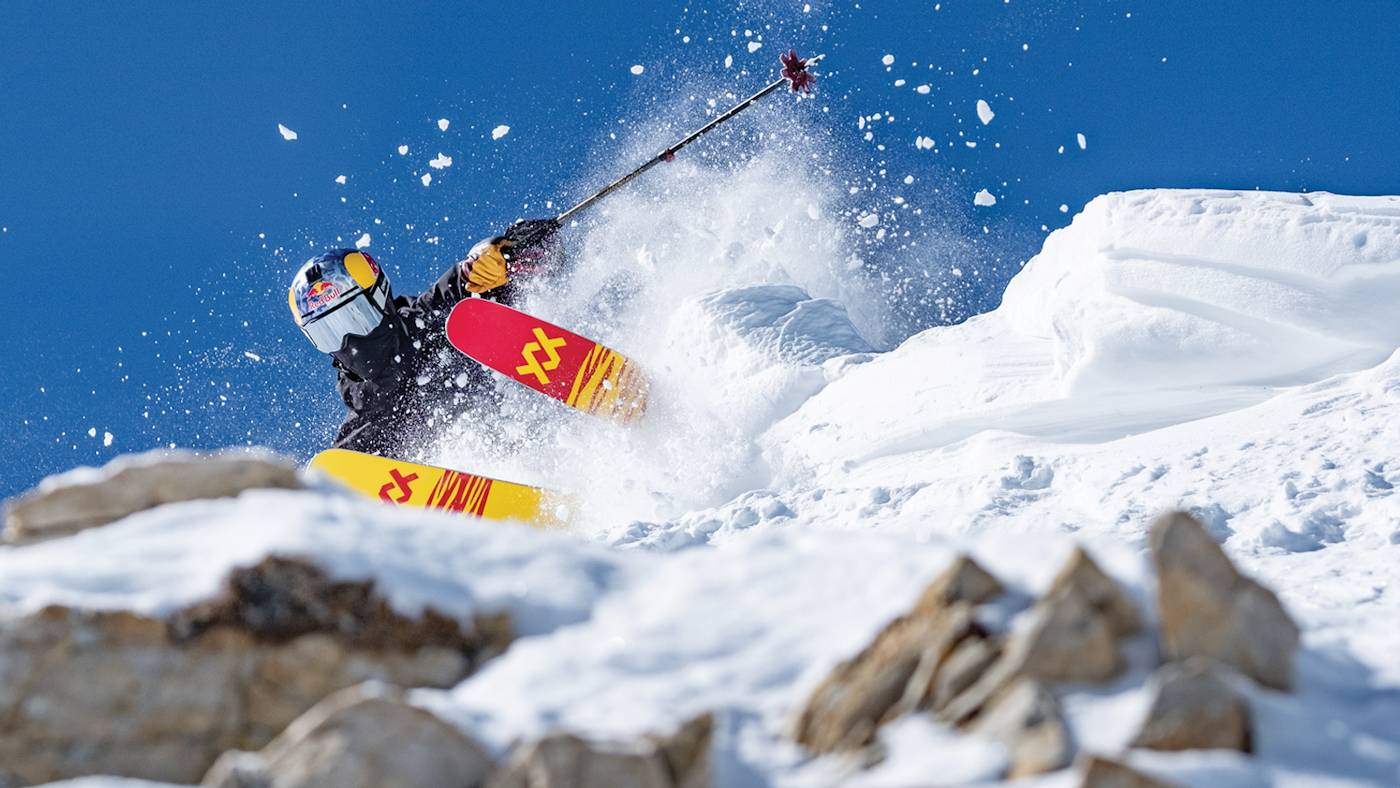
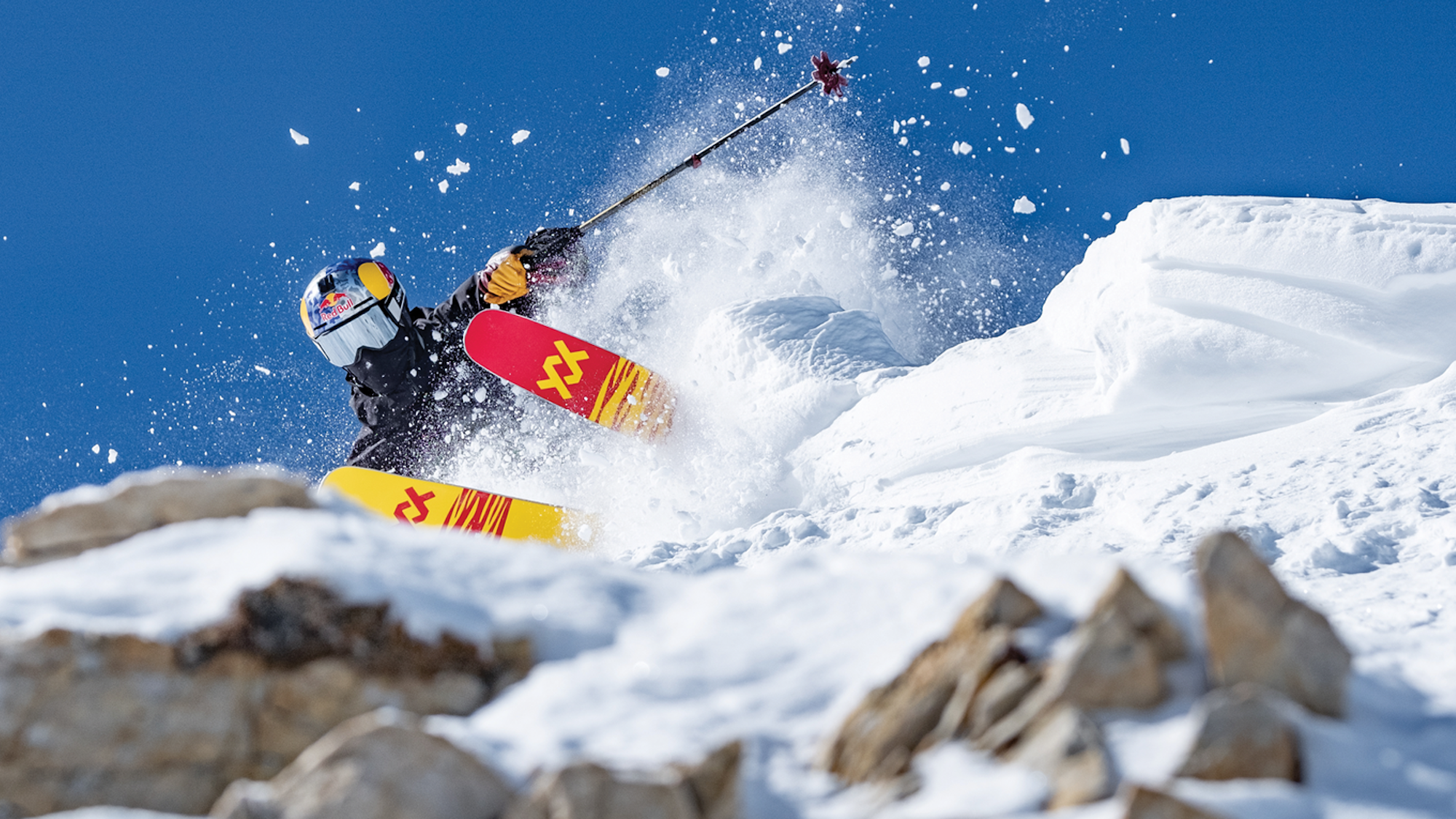
SKIER: Johnny Collinson
PHOTO: Iz La Motte
LOCATION: Alta, UT
Has your style evolved over the years? Did you have any formal art training along the way?
I’ve refined a couple of things, added more layers and started using different techniques. But, as far as my style, which is this pseudo-cubism/figurative stuff, it’s always been the same. I never had any formal training; I dropped out of high school in ninth grade and I was paid to surf [for the Volcom team]. I was in Hawaii at the time and I just had this really good opportunity that I felt was greater than going to school. I still don’t regret it—I traveled the world and got to see a lot of stuff, things I saw in art history books I actually got to look at with my own eyes… as well as all the museums I’ve visited and artists I’ve met along the way. Being able to do my art on the road was a great opportunity, more than—for me—sitting in a classroom. I don’t recommend it to anyone, but it worked for me. I just went for it and did it.
How do you usually start an idea or a sketch?
Straight pencil or pen to paper. Sketching it out then refining it. The “Spirit Animal” collection came out really quickly—the first rounds of drawings I sent Völkl were rudimentary, just crayon and sharpie. When I went to do [the final drawings] I had an idea in my head, I just started with a pencil, outlined them, then filled them with paint. Each one was, really, completed in one shot, they all just came out. Which is usually how I work anyway, most of the time when I do a painting, I just paint straight to the canvas, it’s pretty organic.
So you’re a surfer at heart and I’m curious what similarities you see between skiing and surfing?
Even though the stance is different—[skiers are] parallel versus one foot in front of the other. It’s all about flow, when you’re talking spiritually about the feeling and everything we get out of snowboarding, surfing, skating or skiing. You’re drawing different lines but feeling that the same satisfaction, blasting off a huge jump or carving deep powder. When you surf, you put it on a rail frontside or backside; what’s interesting about skiing is you have four rails. But I don’t really see any differences, other than the way you stand and what you’re riding—you’re still getting the same exhilaration out of it, but [skiers] are probably going a lot faster.
What can skiing learn from surf, skate and snowboard culture?
Oh, that’s a hard one. Crossover tricks from each side? Growing up riding snowboards, sometimes it’d be like: “Skiers are dorks.” But I don’t care what you ride, just have fun. There’s a lot of tricks you can pull from each sport and add to [the other]. I grew up wanting to surf like I skated; I got more excited watching skate videos and going surfing than I did watching surf videos and going surfing. I grabbed that crossover [at a young age] and that whole progressive side to skating I applied to my surfing. It doesn’t matter what you ride—there’s something to learn from every sport, and that’s limitless.
![[TOPSHEET] Talkin' ski, surf and skate with Ben Brough](https://www.datocms-assets.com/163516/1751488284-topsheet_bb_feat.png?auto=format&bg=FFFFFF&w=100)
![[TOPSHEET] Talkin' ski, surf and skate with Ben Brough](https://www.datocms-assets.com/163516/1751488284-topsheet_bb_feat.png?auto=format&bg=FFFFFF&w=1200)
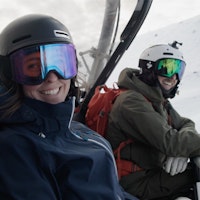
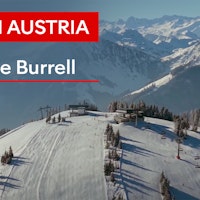
![[GIVEAWAY] Win a Head-to-Toe Ski Setup from IFSA](https://www.datocms-assets.com/163516/1765920344-ifsa.jpg?w=200&h=200&fit=crop)
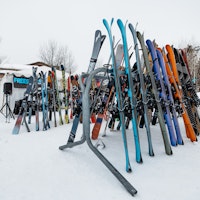
![[GIVEAWAY] Win a Legendary Ski Trip with Icelantic's Road to the Rocks](https://www.datocms-assets.com/163516/1765233064-r2r26_freeskier_leaderboard1.jpg?auto=format&w=400&h=300&fit=crop&crop=faces,entropy)
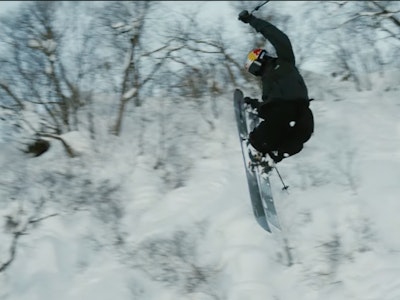
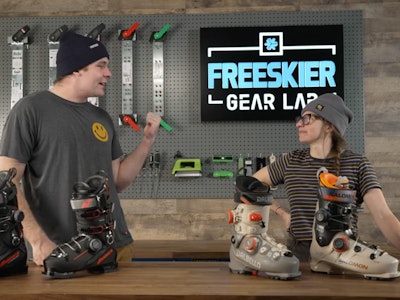
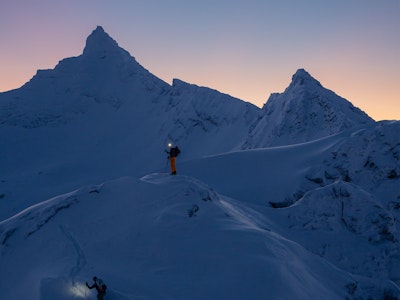
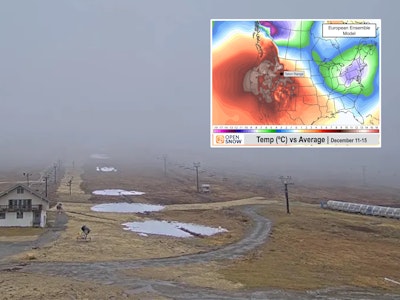
![[GIVEAWAY] Win a Head-to-Toe Ski Setup from IFSA](https://www.datocms-assets.com/163516/1765920344-ifsa.jpg?auto=format&w=400&h=300&fit=crop&crop=faces,entropy)
